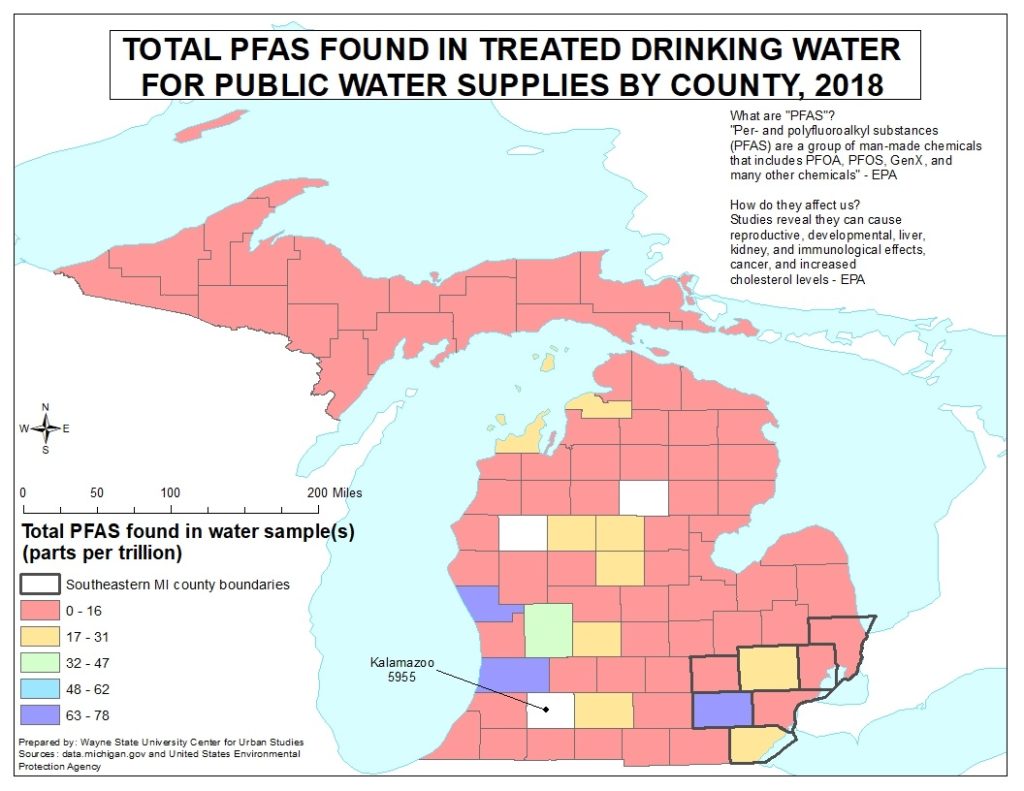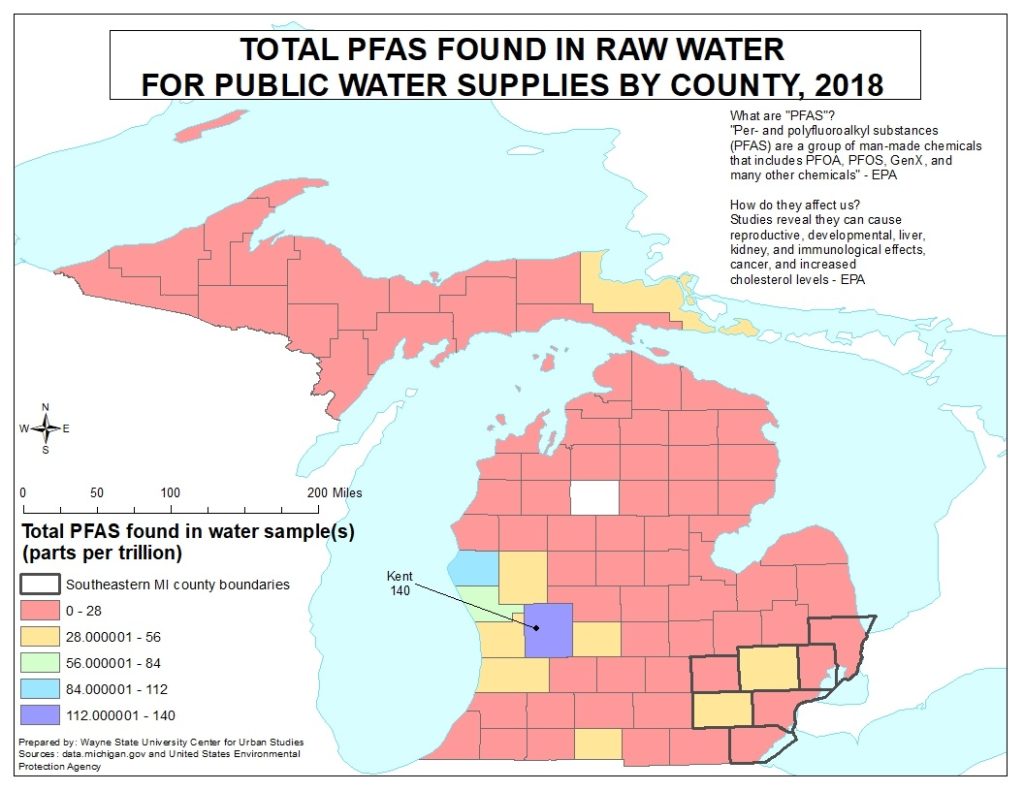Per-and polyfluoroalkyl substances (PFAS) are synthetic chemicals (including PFOA and PFOS) found in everything from packaging to cookware. These chemicals are causing environmental and potential health problems, especially here in Michigan. To better track how these chemicals are affecting the environment and public health the Michigan PFAS Action Response Team was created to research, identify, recommend and implement actions to improve the PFAS situation in the State. Part of this research includes testing the waterways and the public water supply. The first map below shows the total PFAS found in treated public water samples throughout the State in 2018. Three counties in Michigan (Washtenaw, Muskegon and Allegan counties) had between 63-78 parts per trillion for PFAS tested in the public water supply. According to the Environmental Protection Agency the lifetime recommended advisory limit is 70 parts per trillion. In Kalamazoo County the amount of PFAS is far higher than the EPA’s recommended intake and any amount found in every other Michigan county. According to the State of Michigan, 5,955 parts per trillion of PFAS was found in Kalamazoo County. It is believed much of this contamination is from old paper mills in the area, a plastics company and a landfill; at least 115 wells and other sources for drinking water were tested.
The second map below shows the total PFAS found in raw water for public water supplies. For this measurement Kalamazoo County was in with the majority of Michigan’s 83 counties where 0-28 parts per trillion of PFAS was found. Of all the counties in the state, Kent County had the highest amount of PFAS found at 140 parts per trillion. With the exception of the amount of PFAS found in Kalamazoo County’s treated drinking supply, in general, the amount of PFAS found in raw water testing samples was higher than those found in treated public water samples.


Overall, the maps above show that several counties in Michigan have high amounts of PFAS found in public drinking supplies, and in some cases above the EPA lifetime recommendation. As more information about PFAS is discovered that state needs to take actions to prevent further contamination of our water resources by implementing stricter standards. Just recently the Michigan PFAS Action Response Team proposed the lowest parts per trillion thresholds in water supplies in the county. These numbers, which vary depending on the specific PFAS, are still in draft form though and will likely not be formally recommended until October, with enforceable numbers being set by spring of 2020. Once formalized the contaminant levels would be enforceable under the Safe Drinking Water Act.